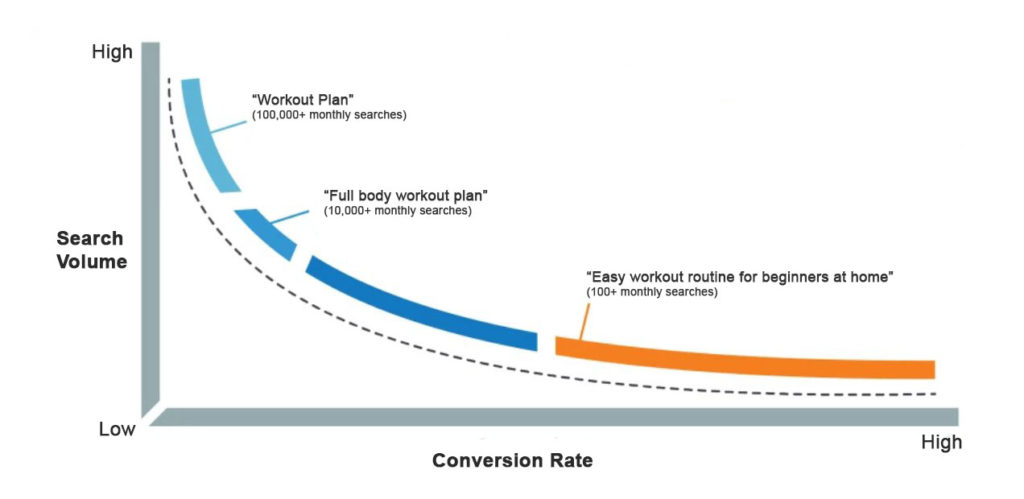When it comes to on-page SEO, one of the most important factors in determining your success is thorough keyword research. It’s imperative to understand exactly what people are searching for so you can optimize your website and ad campaigns appropriately. We tell our clients all the time – if you truly want to win at search engine optimization and pay-per-click advertising, specific is terrific. In this post, we’re going to break down the difference between long tail and short tail keywords to help you better understand which is better for your specific business needs.
What’s the difference between Short Tail Keywords and Long Tail Keywords?
Before deciding which strategy is better for you, it’s important to understand the difference between the two.
- Short tail keywords are typically three words or less and are very broad, generic search terms. For example “hand sanitizer” or “Gym routines” are examples of short tail keywords. These search queries are highly competitive and receive much more search volume on a monthly basis.
- Long tail keywords are typically much longer, more specific search terms. For example “hand sanitizer bottles for your purse” or “at home gym workout routines.” These search queries are far less competitive terms to rank for, and receive a lower volume amount of search traffic.
There are pros and cons to targeting both types of keywords, so it’s important to first understand what the goals of your website are. When it comes to keyword research, there are five things to consider: Volume, Competition, Focus, Cost, and Conversion rate. Understanding how these components work in conjunction with long tail and short tail keywords will help you understand which one to optimize for.
- Volume – The amount of monthly search queries that match or are similar to the search.
- Competition – The amount of other websites or businesses targeting that search query.
- Focus – The intent of the user who is performing the search query. (ex. “best at home workout plans for single parents” is a very high focus search term.)
- Cost – How much the cost-per-click (CPC) would be if you were running Google Ads.
- Conversion Rate – The rate at which the user completes a goal on the website (form fill, product purchase, free quote, etc).+
Now that we understand what long tail and short tail keywords are, and we understand the kind of traffic we are looking to get, now we can breakdown how to determine which is better suited for you.
Which is better, short tail or long tail keywords?
Using the factors that we listed out above, we are going to breakdown both forms of keywords so you can see which will benefit you more.
Short Tail Keywords
- Volume: HIGH
- Competition: HIGH
- Focus: LOW
- Cost: HIGH
- Conversion Rate: LOW
So in short, if you are looking for increased traffic to the site, short tail keywords would work for you. You will pay a much larger cost per click on your paid search campaigns, as the keywords are far more competitive.
Long Tail Keywords
- Volume: LOW
- Competition: LOW
- Focus: HIGH
- Cost: LOW
- Conversion Rate: HIGH
It’s pretty easy to notice that long tail keywords are best for higher conversions at a lower cost. So if the goal of your website is to convert highly focused users, this is your best bet.
Check out this video provided by ahrefs about long-tail keywords.

